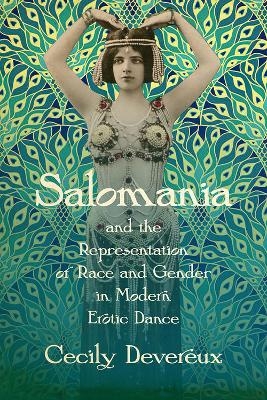
Salomania and the Representation of Race and Gender in Modern Erotic Dance
Wilfrid Laurier University Press (Verlag)
978-1-77112-587-1 (ISBN)
Salomania and the Representation of Race and Gender in Modern Erotic Dance situates the 1908 dance craze, which The New York Times called “Salomania,” as a crucial event and a turning point in the history of the modern business of erotic dance. Framing Salomania with reference to imperial ideologies of motherhood and race, it works toward better understanding the increasing value of the display of the undressed female body in the 19th and early 20th centuries.This study turns critical attention to cultures of maternity in the late 19th century, primarily with reference to the ways in which women are defined in relation to their genitals as patriarchal property and space and are valued according to reproduction as their primary labour. Erotic dance as it takes shape in the modern representation of Salome insists both that the mother is and is not visible in the body of the dancer, a contradiction this study characterizes as reproductive fetishism.
Looking at a range of media, the study traces the modern figure of Salome through visual art, writing, early psychoanalysis and dance, from "hootchie kootch" to the performances dancer Maud Allan called “mimeo-dramatic” to mid-20th-century North American films such as Billy Wilder's Sunset Boulevard and Charles Lamont's Salome, Where She Danced to the 21st-century HBO series The Sopranos.
Cecily Devereux is a professor in the Department of English and Film Studies at the University of Alberta. Her publications include Growing a Race: Nellie L. McClung and the Fiction of Eugenic Feminism (2005).
Introduction: Maud Allan and the Salome dance in 1908
1: Erotic dance and the culture of imperial motherhood
2: “Salomé, c’est moi”: male artists and the image of the dancer
3: Enter Herodias: the phallic mother and the reproductive fetish
4: On not seeing Salome in Sunset Boulevard
5: The fetish and the reproduction of whiteness from the Salome corpus to Salome, Where She Danced
6: “Pathmakers for Salome”: the danse du ventre, the hootchie kootch and “Little Egypt”
7: Oscar Wilde, Loie Fuller and Maud Allen
8: Salomania and the memetic moment
Epilogue: Salomania’s legacies
Works Cited
Notes
| Erscheinungsdatum | 10.07.2023 |
|---|---|
| Zusatzinfo | 13 illustrations |
| Verlagsort | Waterloo, Ontario |
| Sprache | englisch |
| Maße | 152 x 229 mm |
| Themenwelt | Kunst / Musik / Theater ► Film / TV |
| Sachbuch/Ratgeber ► Sport ► Tanzen / Tanzsport | |
| Geisteswissenschaften ► Sprach- / Literaturwissenschaft ► Anglistik / Amerikanistik | |
| Geisteswissenschaften ► Sprach- / Literaturwissenschaft ► Literaturwissenschaft | |
| Sozialwissenschaften ► Ethnologie | |
| Sozialwissenschaften ► Kommunikation / Medien ► Medienwissenschaft | |
| Sozialwissenschaften ► Soziologie | |
| ISBN-10 | 1-77112-587-X / 177112587X |
| ISBN-13 | 978-1-77112-587-1 / 9781771125871 |
| Zustand | Neuware |
| Informationen gemäß Produktsicherheitsverordnung (GPSR) | |
| Haben Sie eine Frage zum Produkt? |
aus dem Bereich


